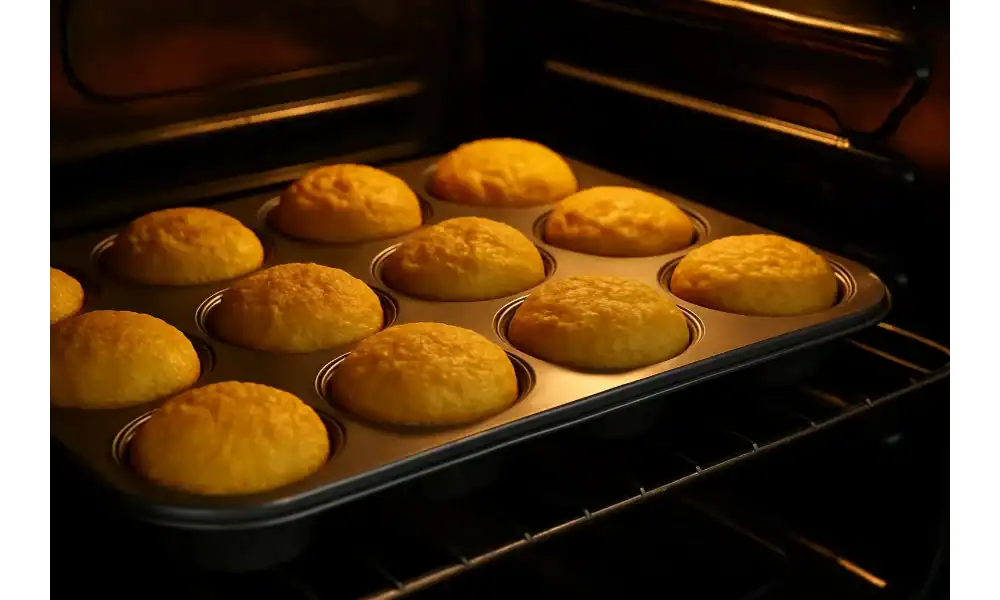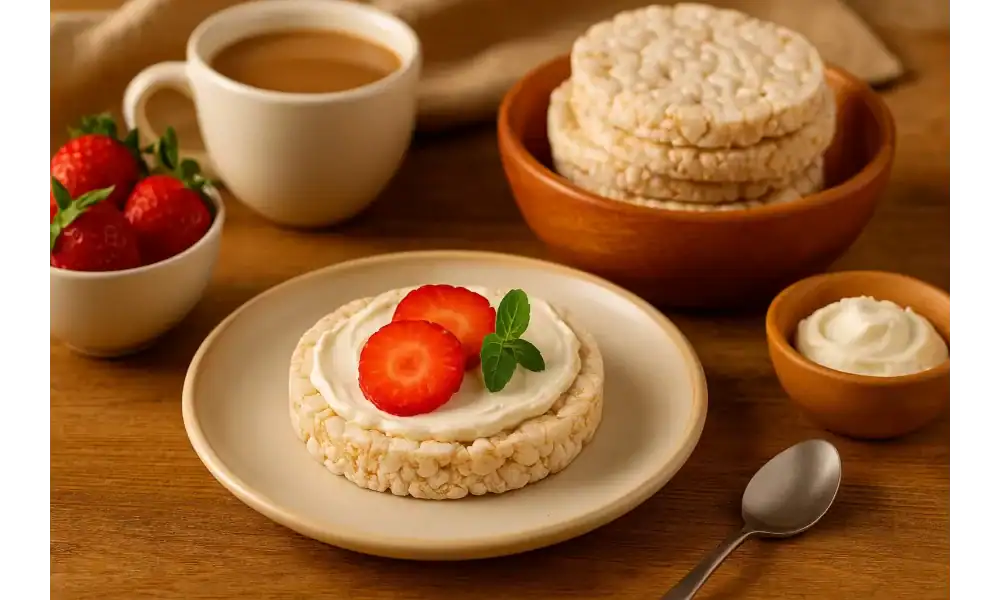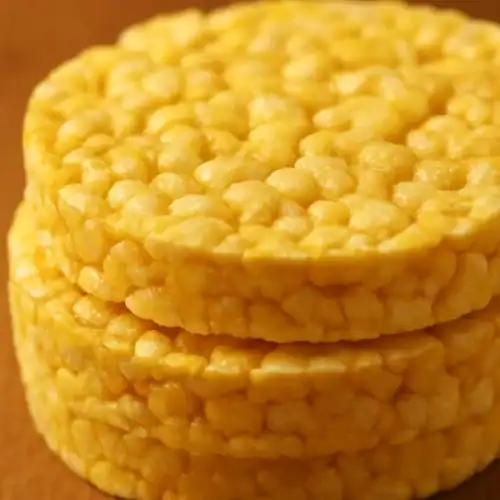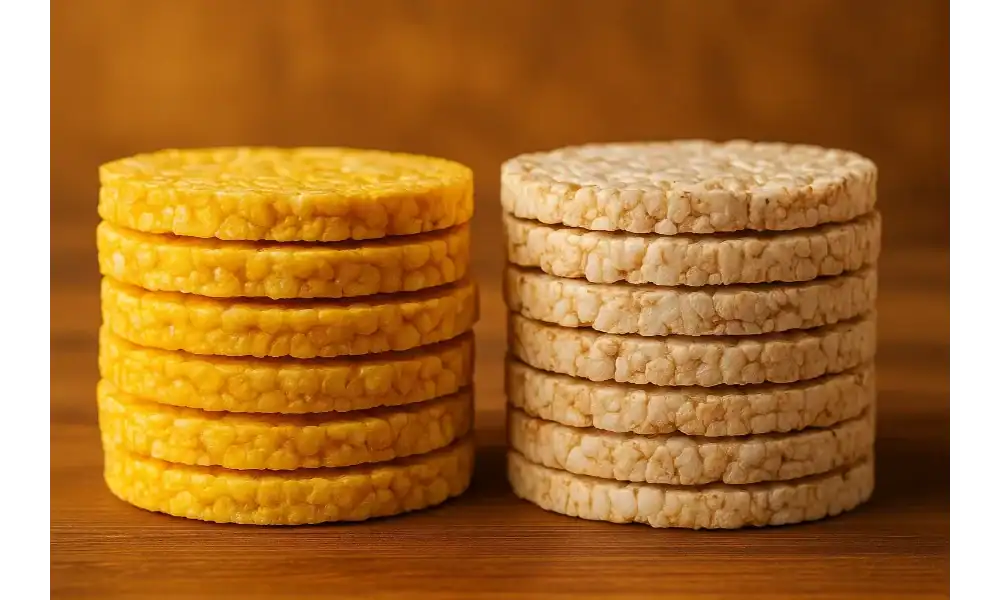Introduction
Looking for a healthy, low-calorie snack? Corn Cakes vs Rice Cakes is a common debate for anyone trying to eat clean or lose weight. Both are light and easy to find, but which one is the better choice for your diet and overall health?
In this post, we’ll compare corn cakes vs rice cakes in terms of taste, texture, calories, carbs, and more. We’ll also cover how they fit into different diets—like low-carb, gluten-free, and weight loss plans.
If you’re not sure which snack is right for you, keep reading. This simple guide will help you make the best choice for your body and your goals.
If you are one of those corn lovers, you might also like:
- How to Make the Best Homemade Cornbread: Easy & Delicious Recipe
- Fresh Corn Salad with Lime and Herbs – Quick & Healthy
- How to Make Authentic Mexican Street Corn (Elote) at Home
- How to Make the Best Black Bean and Corn Salad (Quick & Easy)
Corn Cakes vs Rice Cakes: Nutrition Comparison – Calories, Carbs, and More
Calories per Serving: Which One Is Lighter?
Rice cakes usually have fewer calories than corn cakes. One plain rice cake has around 35 calories, while a corn cake may have 40–60. If you’re counting calories, rice cakes might be the better pick.
Carb Content: Are They Low-Carb or Not?
Both snacks are high in carbs. Rice cakes often have slightly more, especially if made with white rice. Corn cakes are not low-carb either but may contain slightly fewer net carbs. If you’re on a low-carb diet, neither is ideal.
Protein and Fiber: Is One More Filling Than the Other?
Corn cakes generally have more fiber, which can help you feel full longer. Rice cakes have less fiber and almost no protein. For a more satisfying snack, corn cakes win this round.
Sugar and Fat Levels: Hidden Ingredients to Watch For
Always read the label. Some flavored rice or corn cakes have added sugar or oils. Plain versions are usually fat-free and sugar-free, but flavored ones can sneak in extras.
Micronutrients: Which Offers More Vitamins and Minerals?
Corn cakes may offer more nutrients like magnesium, potassium, and B vitamins. Rice cakes, especially made with white rice, have fewer vitamins. Go for whole grain or brown rice versions if you prefer rice.
Taste, Texture, and Cooking Differences

Crunch and Mouthfeel: Crisp vs. Slightly Chewy
Rice cakes are very light and crisp. They have an airy crunch that melts quickly in your mouth. Corn cakes are denser. They feel slightly chewy and give a fuller bite. If you want more texture, corn cakes deliver that.
Flavor Profile: Neutral Rice vs. Corn’s Natural Sweetness
Rice cakes taste plain and mild. They’re perfect if you want your toppings to shine. Corn cakes have a natural sweetness and a deeper flavor. If you enjoy a more flavorful base, corn cakes are the better choice.
How They’re Made: Puffing Rice vs. Pressing Cornmeal
Rice cakes are made by puffing grains under high heat. Corn cakes come from pressing ground cornmeal into thin cakes. The process gives each snack its own shape, feel, and crunch.
Pairing with Toppings: Sweet or Savory Flexibility
Both rice and corn cakes work well with toppings. Rice cakes go great with peanut butter, fruit, or hummus. Corn cakes pair nicely with cheese, avocado, or even eggs. Choose based on what you crave—sweet or savory.
For more creative idea about rice cakes toppings, click here! And for best corn cakes toppings ideas, click here!
Homemade vs Store-Bought Options
You can make both snacks at home, but store-bought is quicker. Homemade corn cakes often taste fresher and more filling. Rice cakes are harder to make at home but easy to find in stores.
Diet Compatibility – Which Fits Your Health Goals?
Weight Loss and Calorie Control
Both rice cakes and corn cakes are low in calories. Rice cakes are slightly lower, making them popular for weight loss. But corn cakes have more fiber, which keeps you full longer. For better appetite control, corn cakes may help more.
Low-Carb and Keto Diets
Neither snack is truly low-carb or keto-friendly. They both contain around 7–14 grams of carbs per cake. If you’re following a strict keto diet, it’s best to avoid both. However, for moderate carb plans, you can enjoy them in small amounts.
Corn Cakes vs Rice Cakes: Which One Is Naturally Gluten-Free?
Plain rice cakes are usually gluten-free. Corn cakes are also naturally gluten-free. Still, check the labels to make sure there’s no cross-contamination or added wheat. Both are safe choices for most gluten-sensitive people.
Vegan and Plant-Based Options
Both rice cakes and corn cakes are vegan-friendly. They’re made from grains and don’t contain animal products. Just avoid flavored versions with cheese or dairy toppings.
Diabetic-Friendly Choices (Glycemic Index Differences)
Rice cakes have a higher glycemic index. They can spike blood sugar quickly. Corn cakes usually have a lower GI, especially if they include whole cornmeal. If you have diabetes or want stable energy, corn cakes may be the smarter pick.
Availability, Cost, and Storage
Price Comparison in Supermarkets
Both rice cakes and corn cakes are budget-friendly. Rice cakes often cost slightly less. A standard pack can range from $1 to $3. Corn cakes may be a bit more depending on the brand and ingredients.
Shelf Life and Storage Tips
Both snacks have a long shelf life. Keep them sealed in a cool, dry place. Once opened, store them in an airtight container to keep them crisp. Always check the expiration date before buying.
Brand Variety and Options
You’ll find many brands for both. Rice cakes come in a wider variety of flavors. Corn cakes are less common but are growing in popularity. Look for brands that focus on whole grain or natural ingredients.
Organic and Non-GMO Versions
Many brands now offer organic and non-GMO options. Corn cakes are often labeled non-GMO since corn is a common GMO crop. If this matters to you, check the label before you buy.
International Availability
Rice cakes are easier to find worldwide. Corn cakes may not be available in all regions. However, in the U.S. and Europe, both snacks are stocked in most health food aisles.
Best Use Cases – When and How to Eat Them

As a Pre/Post Workout Snack
Both corn cakes and rice cakes work well before or after a workout. They provide quick carbs and energy. Add nut butter or banana slices to boost protein and potassium. It’s a fast and fuel-packed option.
Topping Ideas for Meals or Snacks
Rice cakes pair well with hummus, avocado, or almond butter. Corn cakes go great with eggs, cheese, or tomato slices. You can go sweet or savory. Try fresh fruits, seeds, or herbs to keep it interesting.
On-the-Go Convenience
Both are easy to carry and mess-free. Pack them in a zip bag and take them anywhere. They make great snacks for work, school, or travel. Just avoid crushed packs—they break easily.
Kids’ Lunchbox Snack
Rice and corn cakes are light and fun for kids. Choose plain or lightly flavored versions. Add a spread or fruit for extra taste. They’re allergy-friendly and school-safe in most cases.
Breakfast vs Evening Snack Options
Start your day with corn cakes and a boiled egg or avocado. In the evening, go for rice cakes with nut butter or yogurt on the side. Both work well at any time, depending on your hunger and mood.
Crunchy Corn Cakes

Crunchy Corn Cakes
Ingredients
Method
- In a bowl, mix cornmeal, flour, baking powder, salt, and paprika.
- In another bowl, beat eggs, then stir in milk and 2 tbsp oil.
- Combine wet and dry ingredients. Mix in corn kernels and green onions.
- Heat a non-stick skillet with a thin layer of oil over medium heat.
- Drop spoonfuls of batter onto the pan. Flatten slightly.
- Cook for 3–4 minutes per side, or until golden and crisp.
- Drain on paper towels and serve hot.
FAQs – Corn Cakes vs Rice Cakes
1.Are corn cakes healthier than rice cakes?
Corn cakes often have more fiber and nutrients. Rice cakes are lighter in calories. The healthier choice depends on your goals.
2. Which is better for weight loss: corn cakes or rice cakes?
Rice cakes are lower in calories, which helps with weight loss. But corn cakes may keep you full longer due to higher fiber.
3. Do corn cakes and rice cakes have gluten?
Both are usually gluten-free. Always check the label for cross-contamination or added wheat.
4. Are corn cakes good for people with diabetes?
Corn cakes have a lower glycemic index than rice cakes. They may cause fewer blood sugar spikes, but portion control is key.
5. What toppings go well with rice and corn cakes?
Try nut butter, hummus, avocado, cheese, or fruit. Both cakes are versatile for sweet or savory toppings.
Conclusion
Both corn cakes and rice cakes are smart snack options. Each has its own benefits. Corn cakes offer more fiber and a deeper flavor. Rice cakes are lighter and pair well with any topping.
If you want a filling snack, go with corn cakes. If you prefer something light and crisp, rice cakes may be better. It all depends on your taste and diet goals.
Try both and see which one fits your lifestyle best. Either way, you’ll have a healthy, low-calorie snack you can enjoy anytime.
For more recipes, try our:
- How to Make the Best Traditional Shepherd’s Pie (Authentic Recipe)
- The Best Savoury Mince Pie Recipe (Step-by-Step Guide)
- How to Make Juicy Seekh Kebabs at Home – Authentic & Easy Recipe
- Make the Best Chapli Kebabs in Your Kitchen – Easy and Flavorful
- Lobster Bisque Soup Recipe: How to Make It Rich, Creamy, and Flavorful


2 thoughts on “Corn Cakes vs Rice Cakes: Which One Fits Your Diet Better?”